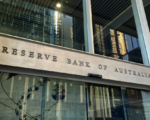Although the Federal Reserve appears to be closing in on its inflation target, the ongoing high cost of goods and services continues to strain the U.S. economy. While recent data shows inflation slowing, the effects of price increases are still evident, causing challenges for individuals, businesses, and policymakers.
Some economists, such as those at Goldman Sachs, predict that upcoming reports may indicate the inflation rate approaching the Fed’s 2% target. However, inflation is a complex issue, not easily encapsulated by a single metric. By some measures, inflation remains uncomfortably high for many Americans and even some Fed officials. San Francisco Fed President Mary Daly recently acknowledged the progress in lowering inflation but warned against complacency, emphasizing that vigilance is still necessary.
Inflation is far from over. Daly’s anecdote about a local resident asking her if the Fed had “declared victory” highlights the public’s concern. The central bank’s recent decision to cut interest rates was aimed at adjusting policy in response to inflation, which has come down from its 2022 peak. Yet, many Americans remain skeptical, as high prices linger in various sectors.
There are two ways to assess inflation: the 12-month inflation rate, which receives most of the attention, and the cumulative impact that inflation has had over the past three years. The Consumer Price Index (CPI), one of the most widely followed indicators, has shown a dramatic improvement, with inflation at 2.4% in September, down from a peak of 9.1% in June 2022. However, other indicators show a less promising picture. For example, the Fed’s preferred measure, the Personal Consumption Expenditures (PCE) price index, is still slightly above the 2% target, according to projections.
Inflation first surpassed the Fed’s 2% goal in March 2021 and was initially considered a “transitory” phenomenon linked to pandemic-related disruptions. Yet, over the past two years, prices have skyrocketed across many sectors. Since the start of the inflation surge, the all-items CPI has risen 18.8%, food prices have jumped 22%, and the cost of everyday necessities like eggs and gasoline have climbed sharply. Housing prices, too, have surged, with the median home price increasing 16% since early 2021.
Furthermore, “sticky” prices—those less likely to change frequently, such as rents, insurance, and medical costs—are still rising at a 4% rate, even as more flexible items like food and gas show signs of easing. This divergence between different inflation measures highlights the complexity of the issue.
Core inflation, which excludes food and energy, continues to be a concern as well. In September, core CPI inflation stood at 3.3%, while the core PCE index was 2.7% in August. These figures suggest that despite some improvement, underlying inflation pressures remain.
Consumer spending has remained strong despite high prices. In the second quarter of 2024, consumer spending reached nearly $20 trillion on an annualized basis, though the pace of spending is beginning to slow. Borrowing has also increased significantly as households have taken on more debt to cope with rising costs. Household debt rose 19% since early 2021, with delinquencies on the rise, though still below historical averages.
Small businesses are also feeling the strain. Many have turned to credit cards to manage cash flow, with small business credit card balances increasing by more than 20% compared to pre-pandemic levels. Inflation remains the top concern for many business owners, as seen in surveys conducted by organizations like the National Federation of Independent Business.
As the Fed prepares for its next policy meeting in November, it faces a difficult choice. While interest rates have been reduced, financial markets are reacting unpredictably, with bond yields rising and mortgage rates climbing despite the Fed’s easing efforts. Some economists argue that the Fed should hold off on further rate cuts until it can better assess the current inflationary environment.
In the end, the public remains uncertain about whether the Fed has truly tamed inflation. As Daly noted, while progress is being made, the journey toward stabilizing prices and achieving lasting economic relief is far from over.


















